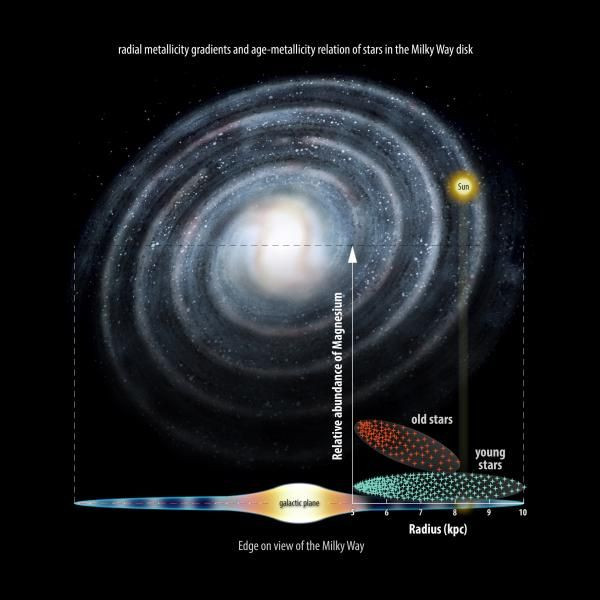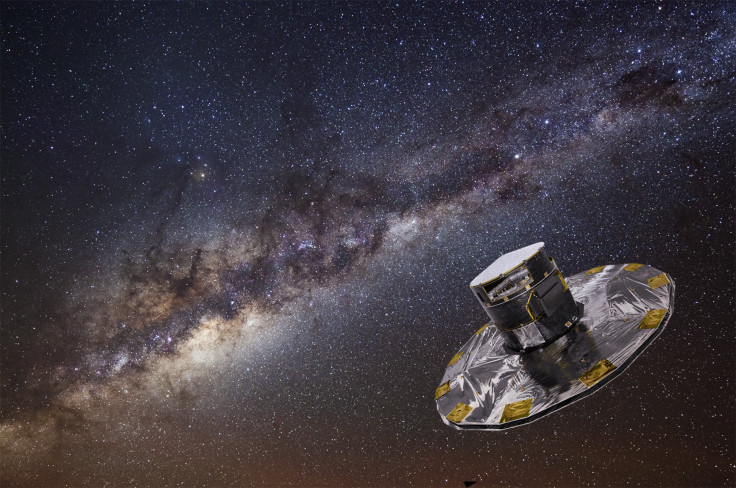How Did The Milky Way Form? New Gaia Observations Reveal The Galaxy Formed ‘Inside-Out’

The European Space Agency’s Gaia satellite, launched this month, already is “revolutionizing” how astronomers understand galactic evolution. According to a new study, researchers believe the Milky Way galaxy was formed “inside out,” with the inner region forming faster than the outer reaches.
Gaia is ESA’s new galactic survey mission and the satellite will observe 1 billion stars. The satellite is to create a 3D map of the Milky Way by mapping and observing the motion of these stars up to 70 times during its mission. The Gaia-ESO survey, the Earth-based component of the survey mission, includes the European Southern Observatory's Very Large Telescope, VLT.

Researchers from the University of Cambridge observed metal elements in the composition of stars in the Milky Way galaxy. Older stars have fewer metal elements than newer stars, as the universe was mostly comprised of hydrogen and helium shortly after the Big Bang, and metals would come later. The study was submitted to the journal Astronomy and Astrophysics.
Stars younger than 8 billion years of age were “metal-rich,” whereas stars older than 9 billion years were “metal-poor.” These types of stars were not confined to certain regions of the Milky Way, described as the “thick disc” of the inner galaxy and the “thin disc” of the outer galaxy, as astronomers observed both types of stars in different regions. The thin disc, the spiral arms of the Milky Way, holds younger stars, whereas the thick disc is much smaller and is located at the center of the galaxy.
Lead researcher Maria Bergemann from the University of Cambridge’s Institute of Astronomy, said in a statement, “From what we now know, the galaxy is not an ‘either-or’ system. You can find stars of different ages and metal content everywhere!”
Gerry Gilmore, lead investigator for Gaia, first theorized the two disc structure of the Milky Way in a 1983 study published in the Monthly Notices of the Royal Astronomical Society. The thin disc contains the majority of the stars found in the Milky Way, including the sun.
The metal composition data was collected by ESO’s VLT, located in Chile, and researchers used Gaia observations to determine the chemical composition of various regions in the Milky Way to determine the rate of star formation.
According to the researchers, massive stars have very short lifespans and will eject a massive amount of magnesium. The “core-collapse supernova” is a boon to galactic evolution as the death of a star can form new stars, due to the ejected gas and dust, a black hole or a neutron star.
Based on the level of magnesium, the researchers can determine which regions of the Milky Way contained these massive stars and the rate of star formation activity. According to the Gaia data, older stars had higher levels of magnesium than younger stars, indicating a shorter, more concise period of star formation.
Gilmore said in a statement, “This study provides exciting new evidence that the inner parts of the Milky Way's thick disc formed much more rapidly than did the thin disc stars, which dominate near our solar neighborhood.”
For researchers, this is the first step in understanding the evolution of the Milky Way. As new observations from Gaia are released, researchers can gain new insight into how the thick disc formed, the composition of old and young stars as well as the structure of the Milky Way itself.
© Copyright IBTimes 2024. All rights reserved.






















